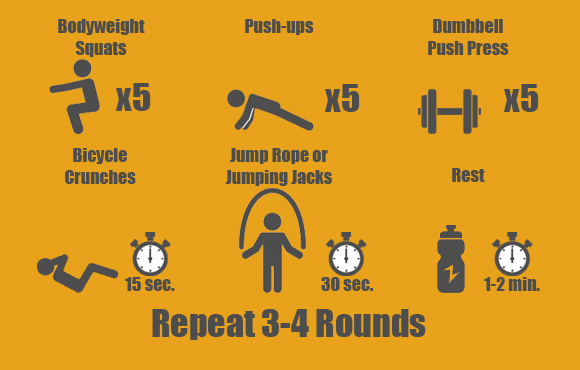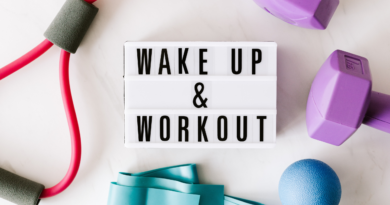The Benefits of Endurance Workouts: Why You Shouldn’t Skip Them
Staying active with endurance workouts is one of the best things you can do to improve your health and well-being, but this doesn’t mean that all workouts are created equal. Some are better than others, and some will even work against you if you don’t know what you’re doing. In this article, we’ll explain the benefits of endurance workouts and give you some tips on how to make them work best for you so that you can experience them fully without any negative side effects or compromising your health in any way.
Think Before you Start

If you want to increase your endurance—or even get into shape—don’t just head outside and start running around for hours. Sure, it might be great for cardiovascular health and help you burn some extra calories, but that’s not really what endurance training is about. Instead, set a goal before you head out with your workout buddy—whether it’s jogging up one hill or biking to work instead of driving—and then track your progress by measuring how long you can perform that activity. And remember to start slow; if running seems like too much, walking will still help increase your heart rate. And when you’re ready to take the next step, try doing an endurance home workout! Start off with some light cardio such as jumping rope or swimming laps in the pool. Once you feel comfortable on this level, move on to more challenging exercises such as squats and deadlifts. Not only are these movements great for building muscle mass, they also help improve your endurance levels because they put pressure on your body so it needs time to recover afterwards.
Think About Your Goals

While it’s important to mix up your exercise routine, it can be easy to fall into a pattern that doesn’t match your goal. For example, if you want to gain strength and bulk up, but you always do endurance workouts at home, you might not see results. Make sure you stay focused on why you work out and what kind of workouts will help achieve those goals. The more energy and focus you put into working out, the better your results will be. Exercise is a marathon not a sprint so keep that in mind as well when thinking about workouts. If you’re constantly doing quick-burst or high intensity workouts with no breaks, you’ll burn yourself out before seeing any real benefits. When we go through this kind of workout, our body releases hormones like cortisol which can actually break down muscle fibers! On the other hand, with longer bouts of activity, we release endorphins which make us feel good and give us that runner’s high feeling.
Get a Customized Training Program

With a customized workout program, you can target your specific goals and avoid ruts that might happen from over-relying on popular workouts. Your best bet is to find a certified personal trainer through your local gym or online. Most trainers will work with you for free (or for as low as $50) for about an hour to assess your health and get to know you better before creating a personalized program based on your goal, fitness level, and any injuries. From there, they’ll design a workout routine and schedule with you—you should be able to do it at home so you don’t have to pay extra at a gym. Some great exercises to incorporate are the deadlift endurance workout, squat endurance workout, and lunge endurance workout. Deadlifts will strengthen your hamstrings, glutes, back muscles, core muscles, arms and shoulders. Squats will strengthen quads, hamstrings, glutes and calf muscles while also improving flexibility in the hips. Lunges strengthen quadriceps and hamstring muscle groups which help improve mobility in the knees.
Be Prepared

One of my favorite things about strength training is that you need so little equipment to get a solid workout. But if you want to add cardio and endurance into your routine, it’s a good idea to invest in some basic equipment for working out at home. The key here is convenience: having everything you need right there when you’re ready to start means less time spent setting up and more time spent getting stronger and faster. Here are some essentials I recommend having on hand.1) A kettlebell
2) A stability ball
3) Exercise bands (light and heavy)
4) A mat or towel for stretching
5) Resistance band
Start Slow, Progress Quickly

To build endurance for your home workout, you’ll want to start with an easy routine that doesn’t overtax your body. Start with a short duration (only 20 minutes) and a low weight—start with five pounds if you are unfamiliar with using weights. Once you become accustomed to doing workouts at home and begin to add more weight, consider how many days a week and how long you will be able to do strength training before becoming overtrained. For instance, many individuals can build up endurance by working out just three times per week for 30 minutes or less depending on their physical capacity; however, those same individuals might only be able to work out twice per week at 45 minutes each session if they progress too quickly. It is important to listen to your body during the course of your workout and take regular breaks as needed. If you find yourself starting to feel fatigued, make sure to stop. Otherwise, keep moving! Endurance workouts allow you to train your heart and muscles without stressing them as much as heavier weights would. You should focus on exercises that target your core like planks, crunches, and bridges while including some aerobic exercise like running in intervals. The intensity of these exercises can increase gradually over time so it is better to start slow than try to do too much all at once!
Keep Motivated
Staying motivated is key to getting through any workout, and all-too-easy to lose sight of when you’re working out on your own. At home or at a gym, these challenges can be overcome by simply hiring a personal trainer or by forming small groups with like-minded individuals. Another way to keep yourself going? Think about what you have to gain from finishing your workout—better health and body composition are just two of many benefits that come with endurance workouts! And if you’re starting to feel demotivated during your training session, remember that even those who train for hours every day feel sluggish sometimes! It’s important to take some time off the treadmill or elliptical machine in order to let your muscles recover, so don’t get discouraged if it feels like you’re not making progress. Remember that maintaining an endurance home workout routine isn’t always easy, but it’s worth it in the end!




